Feinstein’s Folly in the Trump-Russia Probe
The senator's decision to release the Senate testimony of Fusion GPS co-founder Glenn Simpson may turn out to have done more harm than good for the investigation.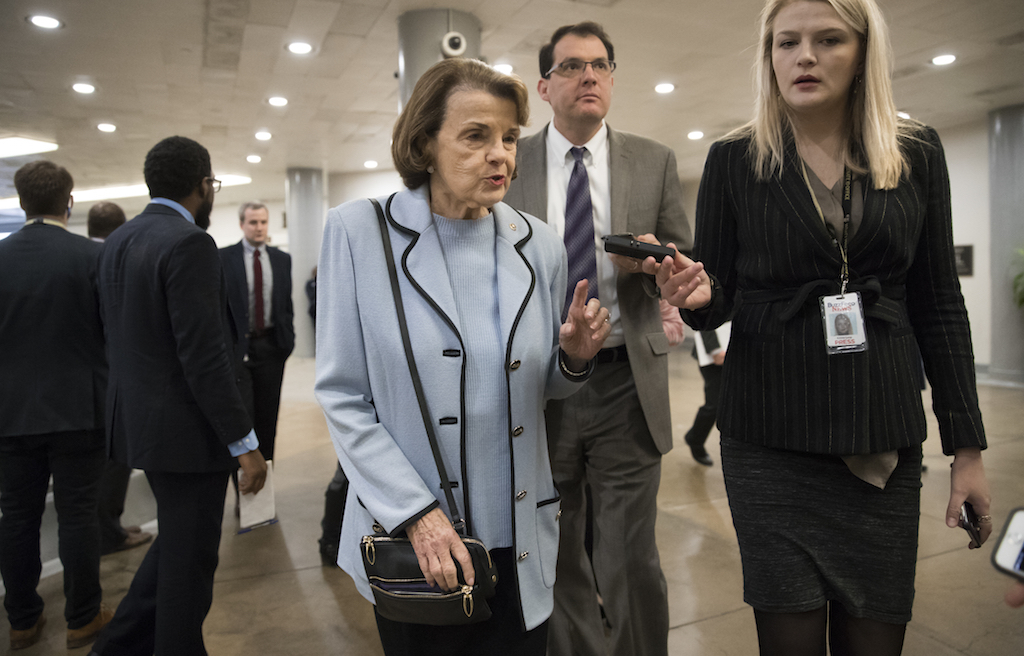 Sen. Dianne Feinstein, D-Calif., the ranking member on the Senate Judiciary Committee, takes a reporter's question in Washington, D.C. (J. Scott Applewhite / AP)
Sen. Dianne Feinstein, D-Calif., the ranking member on the Senate Judiciary Committee, takes a reporter's question in Washington, D.C. (J. Scott Applewhite / AP)
Editor’s note: Since this article was written, two major developments have occurred that impact the issues surrounding the Christopher Steele dossier recounted herein.
First, the House Permanent Select Intelligence Committee voted unanimously to release the transcript of Glenn Simpson’s testimony of Nov. 14, 2017. This testimony differed little from that Simpson provided to the Senate Judiciary Committee. However, under questioning, Simpson conceded that the Steele dossier never made the transition from accusation to fact and that the memorandums produced under contract were little more than broad allegations based upon unproved circumstantial evidence. Moreover, when questioned by the House, Simpson acknowledged a relationship with Bruce Ohr, the former associate deputy attorney general, that predated the 2016 presidential election, and that both he and Steele (who also had a long-standing relationship with Ohr) met with Ohr to discuss the dossier.
The second development of note was the vote of the House Permanent Select Intelligence Committee to distribute a four-page top-secret memorandum prepared by the majority staff that reportedly details severe abuses of the FISA program by members of the Obama administration, including charges that Ohr, Jim Comey and others used the Steele dossier to obtain surveillance warrants against members of the Trump campaign. The Republican members of the House Intelligence Committee are seeking to declassify the memorandum and release it to the public. Some people who have read the memo have suggested that releasing it could derail the Trump-Russia investigation and lead to criminal charges against those responsible for the abuses.
– – –
The Steele dossier.
In the issue of possible collusion between the presidential campaign of Donald Trump and the Russian government and/or actors acting on behalf of the Russian government to influence the outcome of the 2016 election, no single document has captured attention in American politics more than the collection of memorandums prepared by Christopher Steele, a one-time officer with the British Secret Intelligence Service (SIS).
Steele was working on behalf of Fusion GPS, a company specializing in research that was hired by the Democratic National Committee (DNC) and the campaign of Hillary Clinton, through the law offices of Perkins Coie, a high-powered Washington, D.C., law firm, to conduct opposition research on Trump. The report Steele prepared has been at the center of a firestorm of controversy concerning the veracity of its contents and the degree to which, if any, the information may have influenced United States law enforcement and intelligence community investigations and assessments about possible Russia-Trump collusion.
On Aug. 22, 2017, Glen Simpson, co-founder of Fusion GPS, provided testimony to the Senate Judiciary Committee about the nature of his company’s work, including its relationship with Steele and the Steele dossier. On Jan. 9, 2018, Sen. Dianne Feinstein, the ranking Democrat on the Senate Judiciary Committee, released the transcript of Simpson’s testimony to the public. Feinstein’s actions were taken without consulting the Republican chairman of the Judiciary Committee, Sen. Chuck Grassley. The leaking of the Simpson transcript to the media followed two key events: a Jan. 2 op-ed in The New York Times by Simpson and his partner, Peter Fritsch, and a Jan. 5 letter by Grassley and Sen. Lindsey Graham that referred Steele to the Department of Justice for possible violations of federal statutes concerning the provision of false statements to the FBI. In the opinion piece, Simpson and Fritsch expressed their desire for the transcript to be released to the public. And many viewed the Grassley-Graham letter, which was not signed by Feinstein, as an attempt to attack the credibility of the Steele dossier by labeling its author a liar.
Feinstein’s release of the Simpson testimony was seen as an effort to level the political playing field in the face of Republican inaction and obstruction regarding the Judiciary Committee’s stalled investigation into possible Russian-Trump collusion. At first blush, she seemed to have succeeded. Much of the initial press coverage repeated Simpson’s claims regarding the veracity of the Steele dossier, along with other details of Simpson’s opposition research into the business activities of Donald Trump.
Upon closer examination, however, Simpson’s Senate testimony has major problems—not with what it says about the Steele dossier, but rather with what it doesn’t say. There are glaring omissions of chronology and conduct which become exposed only upon a more detailed examination of the entire record.
In fact, Feinstein’s move may have done more harm to her cause than good, especially in light of a subpoena issued by the House Intelligence Committee to compel the testimony of a senior Justice Department official, Bruce Ohr, who met with both Steele and Simpson in 2016. Ohr’s name does not appear in the unredacted transcript of the Simpson testimony. This omission, when compared to the totality of the available record, raises questions as to the veracity and completeness of Simpson’s account to the Senate Judiciary Committee and helps shed light on the Grassley-Graham reasoning behind the referral of Steele to the Justice Department.
The specific concerns of Grassley and Graham are not public knowledge yet, but they were spelled out in a top-secret attachment to their referral letter. The classification of the attachment, and the reference in the unclassified letter to the FBI, suggests that the senators were citing internal FBI and/or Justice Department reports on meetings between Steele and the FBI. But clues can be found in comments made by Graham after reviewing documents the Justice Department provided Congress that included the Steele-FBI interactions.
“Any time a document is used to go to court,” Graham said, “for legal reasons, I think the Department of Justice owes it to the court to be up-and-up about exactly what this document is about, who paid for it, who’s involved, what their motives might be. And I can just say this: After having looked at the history of the dossier, and how it was used by the Department of Justice, I’m really very concerned, and this cannot be the new normal.”
Graham alludes to something that has not been publicly acknowledged: The Steele dossier played a central role in triggering the FBI’s investigation into possible Trump-Russia collusion and granting a FISA surveillance warrant to monitor the communications of Carter Page, a foreign policy adviser to the Trump campaign. A review of Simpson’s Senate testimony would seem to shield the Steele dossier from having played a central role, if any, in either of these events. Steele’s initial report, dated June 20, 2016, was made available to the FBI on July 5, 2016—well after the FBI’s announcement that it was opening an investigation into Trump. Likewise, Steele’s second meeting with the FBI, which occurred in late September, postdated the FISA warrant issued against Page, which took place in July 2016.
Simpson’s testimony, however, sheds some interesting light on the allusions of Graham. At one point in his testimony, Simpson was asked if “part of Fusion GPS’ business involves attempting to have media outlets publish articles that further your client’s interest.” Simpson replied, “Yeah … we work with the press frequently.”
“And has Fusion GPS,” the Senate staff followed up, “ever provided information to journalists in order to encourage them to publish articles or air stories that further your client’s interests?”
“Yes,” Simpson answered.
The “client,” in this case, was Perkins Coie, the law firm representing the DNC and Clinton campaign. Perkins Coie and the DNC already had given voice to what their interests were in the Trump-Russia issue through their actions in working to get the FBI to publicly declare that Russia was the perpetrator of the DNC server breach. When it failed to get the FBI to act, Perkins Coie orchestrated a carefully planned public relations campaign, first by granting an exclusive story to The Washington Post in which Russia was named as the culprit behind the DNC cyber intrusion, and then by permitting the cybersecurity firm that carried out the post-intrusion response and investigation, CrowdStrike, to publish a technical report that detailed the alleged nature of the methodology Russia used in carrying out this attack. There can be little doubt that any media reports that explored the issue of alleged collusion between the Trump campaign and Russia, as well as any related law enforcement investigations that might be underway, would be in the best interests of Perkins Coie, the DNC and Hillary for America—all three operating as “clients” of Fusion GPS.
The timing associated with this provision of information derived from the Steele dossier to the press is important, as is the issue of who contacted whom. According to Simpson, he had “spoken to reporters over the course of the summer … about the investigations by the government and the controversy over the connections between … the Trump campaign and the Russians.” During his meeting with the Senate Judiciary Committee staff, it was established that Steele and Simpson conducted three briefings with journalists in 2016: in late September, mid-October and late October. The staff also listed the identities of the news organizations for which the briefings were provided. Simpson was read the following passage from a court filing in the United Kingdom involving a lawsuit against Steele related to the publication of his report on Trump and Russia: “No copies of the pre-election memoranda were ever shown or provided to any journalist by or with the permission of [Steele]. The briefings involved the disclosure of limited intelligence regarding indications of Russian interference in the U.S. election process and the possible coordination of members of Trump’s campaign team and Russian government officials.”
“Is that a full and accurate account of all the news organizations with which Fusion and Mr. Steele shared information from the memoranda?” the Senate staffers asked Simpson.
“I’d say it’s largely right,” Simpson replied, offering some minor corrections to the identity of some of the news organizations cited (for instance, switching ABC News with CNN during the mid-October press briefing). Missing from the list of journalism outlets Simpson acknowledges as having briefed, together with Steele, are The Wall Street Journal and Politico.
On July 9, Carter Page, an unpaid low-level foreign policy adviser to the Trump campaign, traveled to Moscow in a personal capacity and delivered a speech at the New Economic School, a higher education and research institute founded in 1992 whose board of directors includes Russian Deputy Prime Minister Arkady Dvorkovich. The Washington Free Beacon covered Page’s speech in an article published July 11, reporting that Page, described as “an energy executive with ties to Russian gas giant Gazprom,” was critical of “the United States and other Western powers for their ‘hypocritical focus on ideas such as democratization, inequality, corruption, and regime change’ in other countries.” The Free Beacon, quoting an interview Page gave to Bloomberg in March 2016, highlighted his antipathy toward American sanctions of Russia. “So many people who I know and have worked with have been so adversely affected by the sanctions policy,” Page said. “There’s a lot of excitement in terms of the possibilities for creating a better situation.”
Subsequent reporting by The Washington Post on Aug. 5, 2016, minimized the importance of Page’s visit and speech. Fyodor Lukyanov, editor of Russia in Global Affairs and chairman of the presidium of the Council on Foreign and Defense Policy, noted that Page “had only met with some university professors for informal coffees.”
Elsewhere, however, a different version of events was emerging.
Steele, fresh off his July 5, 2016, meeting with the FBI, continued to receive reports from his network of sources inside Moscow. In a report dated July 19, 2016, titled “Russia: Secret Kremlin Meetings Attended by Trump Advisor Carter Page in Moscow,” Steele put a dramatically different spin on what had transpired during Page’s Moscow visit.
According to Steele, a Russian associate of Igor Sechin, CEO of national Russian oil company Rosneft, reported that Page met in secret with Sechin in Moscow. During this meeting, Steele’s source claims that Sechin raised the possibility of bilateral trade between Russia and the United States in the energy sector in exchange for the lifting of economic sanctions imposed on Russia in the aftermath of its 2014 annexation of Crimea. Steele also reported that an official “close” to Sergei Ivanov, head of Putin’s presidential administration, “confided in a compatriot” that Page also met with the head of the internal political department of the presidential administration, Igor Devyekin. During this alleged meeting, the existence of Russian intelligence files containing compromising material on both Clinton and Trump was revealed, and Trump should “bear this in mind” when dealing with Russia.
This report was delivered to Glenn Simpson at Fusion GPS about July 22, 2016—the date that WikiLeaks began to release thousands of emails purloined from the DNC. These emails revealed the extent to which the DNC collaborated with the campaign of Hillary Clinton against her rival, Bernie Sanders, leading to the resignation of the DNC chairwoman, Debbie Wasserman Schultz, on July 24, one day before the Democratic National Convention began in Philadelphia. The next day, July 25, the FBI released a statement announcing it was “investigating a cyber intrusion involving the DNC” and noting that “a compromise of this nature is something we take very seriously.”
Much has been made about possible linkage between the FBI’s decision to open an investigation into the theft of the DNC emails and the report turned over by Steele to the FBI on July 5, 2016. The importance of the Steele memorandum as a trigger of the FBI’s decision has been diluted by the recent revelation that another unpaid volunteer on the Trump foreign policy team, George Papadopoulos, had informed an Australian diplomat, Alexander Downer, about a claim that a former Maltese diplomat with connections to Russia, Joseph Mifsud, allegedly made. The claim? That Russia was in possession of “thousands” of emails that put Hillary Clinton in a negative light.
According to officials familiar with the FBI’s investigation, the Steele memorandum corroborated intelligence information the FBI had received from a separate source (in this case, a cable sent from Australia sometime after July 22, 2016, which detailed Downer’s April 26 conversation with Mifsud). The FBI already was looking into who was responsible for the breach of the DNC server and subsequent theft of emails. The Downer cable served as the impetus for an expansion of that investigation into one that explored the possibility of collusion between the Trump campaign and the Russian government. Steele’s memorandum, provided to the FBI on July 5, 2016, may have played a supporting role in triggering the FBI’s investigation. But if the reason for the FBI’s summoning of Steele to Rome in September 2016 was, as Simpson told the Senate Judiciary staff, to check on the credibility and veracity of Steele’s sources, it seems unlikely the FBI would have been moved to launch an investigation solely on the basis of Steele’s June 20, 2016, memorandum.
There was, however, something else behind the FBI’s investigation into Trump that implicated the reporting done by Steele on behalf of Fusion GPS beyond the issue of compromised emails: Carter Page’s July 9, 2016, visit to Moscow. What stands out about the July 19, 2016, memorandum prepared by Steele about Page’s Moscow trip is its timing. Written too late to have been part of the July 5, 2016, meeting Steele had in Rome with the FBI, it could only have been turned over to the FBI, according to Simpson, when Steele traveled to Rome in late September 2016 for his second, more detailed debriefing by the FBI’s Rome office.
“Carter Page shows up in Moscow and gives a speech,” Glenn Simpson told the Senate Judiciary Committee staff. “He’s a campaign adviser and he gives a speech about dropping sanctions. … These external events prompted us to say I wonder what the FBI did, whoops, haven’t heard from them. So that was basically the state of things through September.”
Except that it wasn’t that simple. Page, in his testimony before the House Permanent Select Committee on Intelligence on Nov. 2, 2017, said two things that resonate about his Moscow visit. First, he denied knowing, or ever meeting with, the head of Rosneft, Igor Sechin (Page did acknowledge meeting with Andrey Baronov, head of investor relations for Rosneft, at a bar to watch a soccer match on July 6, 2016, but said they never discussed Sechin or sanctions). “It’s bullshit. Just bullshit,” Mikhail Leontiev, a spokesman for Rosneft, said about the possibility of a Page-Sechin meeting. “You need to understand who Sechin is to even ask this question. It’s hard to have a meeting with him at all. It’s absurd.” Page also denied that he met with the head of the internal political department of the presidential administration, Igor Devyekin, in any capacity. Page did acknowledge engaging in a brief 10-second greeting with Arkady Dvorkovich, Russia’s deputy prime minister, who serves on the board of the New Economic School and who also spoke on July 9, 2016.
Of greater interest is what Page told the House Intelligence Committee about what happened after he returned from Moscow, in particular a communication he received from The Wall Street Journal on July 26, 2016: “We are told you met with Igor Sechin during your Moscow trip and discussed energy deals and the possibility of the U.S. government lifting sanctions on him and others.” The Wall Street Journal’s inquiry matches precisely the information contained in the Steele memorandum of July 19, 2016, detailing Page’s Moscow visit.
Insight into the possible source of The Wall Street Journal’s inquiry come from Julia Ioffe, who wrote an article for Politico dated Sept. 23, 2016. “As I started looking into Page,” Ioffe wrote, “I began getting calls from two separate ‘corporate investigators’ digging into what they claim are all kinds of shady connections Page has to all kinds of shady Russians. One is working on behalf of various unnamed Democratic donors. The other won’t say who turned him on to Page’s scent. Both claimed to me that the FBI was investigating Page for allegedly meeting with Igor Sechin and Sergei Ivanov, who was until recently Putin’s chief of staff—both of whom are on the sanctions list—when Page was in Moscow in July for that speech.”
Neither The Wall Street Journal nor Politico was listed by Simpson or Steele as having been briefed on “limited intelligence” derived from the Steele memorandums “regarding indications of Russian interference in the U.S. election process and the possible coordination of members of Trump’s campaign team and Russian government officials.” Moreover, the timing associated with the Wall Street Journal inquiry and the outreach to Politico occurs before the late September 2016 time frame that Simpson and Steele cite as their initial media briefing (Ioffe’s article in Politico, although published on Sept. 23, 2016, makes it clear that the outreach by the “corporate investigators” took place well before the date of publication). What is clear is that someone familiar with the Steele memorandum of July 19, 2016, had contacted both The Wall Street Journal and Politico on or after July 26, 2016. Ioffe’s description of the source of this inquiry being a “corporate investigator” working on behalf of “various unnamed Democratic donors” is a precise description of Fusion GPS.
On Aug. 25, 2016, CIA Director John Brennan provided a briefing to Sen. Harry Reid, at that time the senior Democrat in the Senate, as part of the so-called “Gang of Eight process.” This was one of a series of briefings Brennan provided to key congressional leaders. According to Brennan, the same briefing was given to each of the “Gang of Eight” members.
“Through the so-called Gang of Eight process, we kept Congress apprised of these issues as we identified them,” Brennan recounted during testimony before the House Permanent Select Committee on Intelligence on May 23, 2017. “Again, in consultation with the White House, I personally briefed the full details of our understanding of Russian attempts to interfere with the election to Congressional leadership, specifically Senators Harry Reid, Mitch McConnell, Dianne Feinstein, and Richard Burr, and to Representatives Paul Ryan, Nancy Pelosi, Devin Nunes, and Adam Schiff between 11 August and 6 September.”
On Aug. 25, 2016, Brennan briefed Reid on the issue of Russian interference. During this briefing, Brennan indicated that advisers to Donald Trump might be working with the Russians to help swing the election in favor of the Republican candidate. Brennan informed Reid that the FBI was investigating that claim, zeroing in on communications and financial interactions between these advisers and Russia.
According to Brennan, he “was aware of intelligence and information about contacts between Russian officials and U.S. persons that raised concerns in my mind about whether or not those individuals were cooperating with the Russians, either in a witting or unwitting fashion, and it served as the basis for the FBI investigation to determine whether such collusion—cooperation—occurred.” Brennan indicated that it was the job of the FBI, not the CIA, to “make a determination about whether a U.S. person is cooperating, colluding, or whatever in some type of criminal or legal matter.” As Brennan made clear to Reid, the CIA was legally limited in what it could do to advance the investigation of a U.S. citizen. This was the job of the FBI.
On Aug. 27, 2016, Reid sent a letter to then-FBI Director James Comey. “The prospect of a hostile government actively seeking to undermine our free and fair elections,” Reid wrote, “represents one of the gravest threats to our democracy since the Cold War and it is critical for the Federal Bureau of Investigation to use every resource available to investigate this matter thoroughly and in a timely fashion.” Reid then raised the issue of Carter Page. “Questions have been raised about whether a Trump advisor who has been highly critical about U.S. and European economic sanctions on Russia, and who has conflicts of interest due to investments in Russian energy conglomerate Gazprom, met with high-ranking sanctioned individuals while in Moscow in July of 2016, well after Trump became the presumptive Republican nominee.” Reid concluded that “this matter should be fully investigated, and this investigation made public.”
Highlighting the importance of this request, Reid sent a follow-up letter to Comey on Oct. 30, 2016, noting that “In my communications with you and other top officials in the national security community, it has become clear that you possess explosive information about close ties and coordination between Donald Trump, his top advisors, and the Russian government. … I wrote to you months ago calling for this information to be released to the public.”
The major takeaway from the Reid correspondence is his citation of Page’s alleged meeting with “high-ranking sanctioned individuals while in Moscow”—a reference to Sechin and perhaps Ivanov (although Steele’s report did not say that Page met with Ivanov but rather someone “close to Ivanov” as the source; Ioffe’s account in Politico suggests that even the “corporate investigators” misrepresented Steele’s report to mean Page had met with both Sechin and Ivanov). Page has vociferously denied any such meeting, and there has been no movement on the part of either Congress or the Department of Justice to prosecute him for perjury. This would all but exclude the possibility of CIA Director Brennan having an official intelligence source that corroborated the claims of a Page-Sechin meeting. What seems more likely is that Brennan briefed Reid on the contents of the Steele memorandum of July 19, 2016, which in turn drove Reid to correspond with Comey on Aug. 27, 2016, asking for a full investigation into Page’s activities. Reid’s letter also would serve as the impetus for the FBI to summon Steele to Rome in September to learn more about the sources and methods he used in preparing his memorandums.
If the Steele dossier was, as the chronology suggests, the source of CIA Director Brennan’s briefing to Sen. Reid, and Reid’s subsequent letter to FBI Director James Comey, the question of how Brennan came into possession of this information becomes paramount. Here, the testimony of Glenn Simpson is critical. The Senate Judiciary staff asked him: “Has anyone associated with Fusion GPS ever told clients … that the company could find and distribute information or take other actions in order to encourage government agencies to initiate an investigation?”
Following a seven-minute break to confer with counsel whether “such a predicate for the answer exists,” Simpson was finally able to reply. “Generally speaking,” Simpson noted, “we say we will conduct an open-ended inquiry that’s not goal-directed and the results of the research will guide whatever decision you want to make about how to use it … it’s custom information, it’s a customized product. You tell us what your problem is, and we customize a solution.”
Later Simpson was asked, “Has Fusion GPS ever had an arrangement with a client in which the company was specifically tasked with getting government agencies to initiate an investigation?”
“We don’t have any agreements like that we would put into writing,” Simpson replied. However, he noted, “in the course of dealing with a client, you know, we might talk about whether, you know, something was worthy of a government investigation and talk about how that could be done.”
Simpson was not specific on the question of “how that could be done.” On advice of counsel (citing the possible implication of privileges and obligations), Simpson declined to answer whether or not “the client” (Perkins Coie) knew Fusion GPS had hired Christopher Steele, or if “the client” had ever directed Steele’s work or had conversations with him. Interestingly, after consultation with counsel, Simpson was granted leave to answer whether or not “the client” ever directed Steele to go to the FBI—Simpson was able to deny this. Left unanswered was whether “the client,” having been briefed on the Steele material, might have taken it upon himself to approach either the FBI or the U.S. intelligence community.
There is no doubt that someone familiar with the July 19, 2016, Steele memorandum reporting on Carter Page’s visit to Moscow reached out to at least two journalistic outlets in late July-early August 2016 in an effort to publicize the claims made in the memorandum. Both Glenn Simpson and Christopher Steele have denied that any interaction with journalists occurred during this time frame. It also seems likely that someone familiar with the Steele reporting on Page initiated a process that resulted in this information coming into the hands of CIA Director Brennan, and thus was included in highly sensitive briefings to the senior-most members of Congress and forwarded to the FBI for investigation. Simpson again denies that either he or Steele was involved in interactions with the FBI that would chronologically permit the Steele memorandum on Page to have been shared during this time (the referral of Steele to the Justice Department by Sens. Grassley and Graham regarding false statements may have something to do with these discrepancies.)
The extent to which the Steele memorandum influenced the July 2016 decision of the FBI to investigate Trump is unknown at this time, as is the role, if any, the Steele dossier played in the granting of a FISA warrant to surveil Page. The answers to these questions may be provided in documents recently provided by the Department of Justice to the House Permanent Select Intelligence Committee regarding the Steele dossier. It is here that the name of Bruce Ohr becomes more relevant.
As the associate deputy attorney general, Ohr was one of the most senior members of the Department of Justice. When, in December 2016, information reached the Republican chair of the House Permanent Select Intelligence Committee, Devin Nunes, that Ohr had met during the 2016 presidential campaign with Christopher Steele, Ohr was removed from that position. Ohr is currently scheduled to testify before Nunes’ committee in February. At that time, the extent of his contacts with Steele, whom he has known since 2006 when Steele was an active SIS officer, will become clear. So, too, will Ohr’s relationship with Simpson, whom he met with over Thanksgiving 2016.
But there is another connection between Simpson and Ohr that Nunes’ committee will be exploring as well: the relationship between Ohr’s wife, Nellie, and any connection between Ohr and the Steele dossier. Nellie Ohr worked for Simpson and Fusion GPS during the 2016 presidential election as a Russian analyst, specifically tasked with researching Trump. The potential importance of such a role emerged in Simpson’s Senate testimony, in which he noted that the Steele memorandums were used to “inform” analysts inside Fusion GPS who were responsible for preparing a more finished product that would be delivered to “the client.”
Whether Nellie Ohr served as the conduit of information derived from the Steele dossier to her husband, Bruce Ohr, is not publicly known. Nor is the extent to which any analytical products that Nellie Ohr produced may have been shared with “the client,” and subsequently passed on to either the CIA or FBI. There is, however, little doubt that this will be a major line of questioning when Bruce Ohr appears before the House Intelligence Committee next month.
Here is where Sen. Feinstein’s rash decision to publicize the testimony of Glenn Simpson may turn out to have been a strategic mistake. Simpson’s own words can now be used to fuel a line of inquiry that is the exact opposite of the one desired by Feinstein and her allies and deserved by Americans. Feinstein’s folly is but the latest in a string of actions that illustrate the insanity on the part of the U.S. intelligence community and law enforcement in allowing highly politicized opposition research material to pollute any legitimate inquiry and investigation into possible Trump-Russia ties.
Rather than relegating the Steele dossier to the trash heap of history, where it belongs, Dianne Feinstein has imbued it with a relevance that brings America no closer to a resolution of the issue of possible collusion between Donald Trump and Vladimir Putin’s Russia.
Your support is crucial...As we navigate an uncertain 2025, with a new administration questioning press freedoms, the risks are clear: our ability to report freely is under threat.
Your tax-deductible donation enables us to dig deeper, delivering fearless investigative reporting and analysis that exposes the reality beneath the headlines — without compromise.
Now is the time to take action. Stand with our courageous journalists. Donate today to protect a free press, uphold democracy and uncover the stories that need to be told.
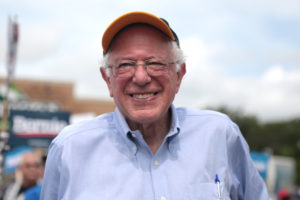
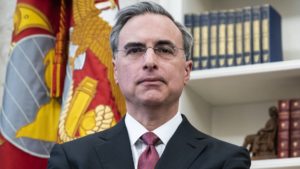
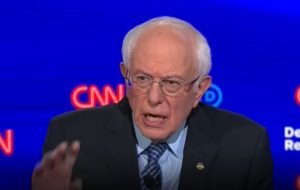

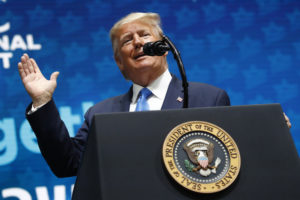

You need to be a supporter to comment.
There are currently no responses to this article.
Be the first to respond.